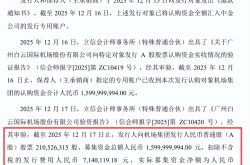Second-hand recycling platforms are going public one after another: popularizing while losing money, is it difficult to change the 'slow industry' attribute?
![]() 09/27 2024
09/27 2024
![]() 435
435
In the final analysis, the second-hand platform is also a "mobile phone dealer".
The release of the new iPhone every year will set off a wave of global replacement boom, which is not only a grand event for Apple fans, but also brings significant market opportunities for the second-hand recycling industry. As the new iPhone gradually comes on the market, consumers are considering how to deal with their old devices, and the second-hand recycling industry has ushered in the busiest period of the year.
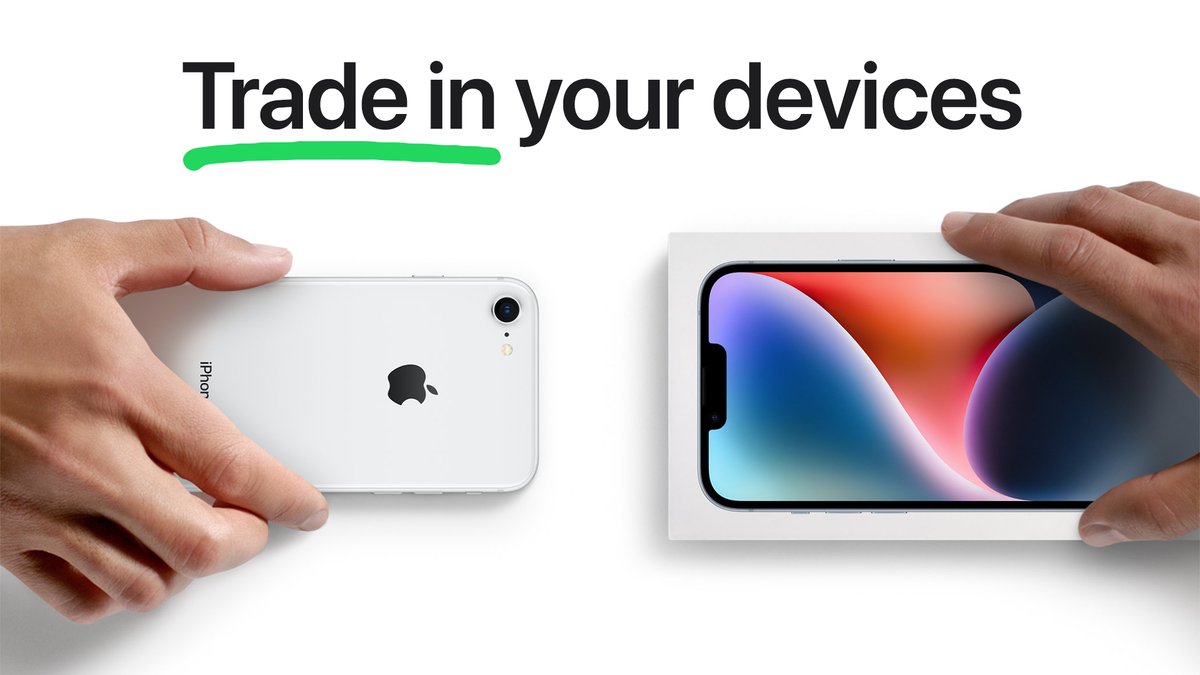
Image source: Apple
Unlike the practice of "letting the old phone rot in the drawer" ten years ago, shorter replacement cycles, higher purchase costs, and a more developed second-hand trading industry have made the topic of "trade-in" increasingly common. Whether the old phone can be safely and properly disposed of and whether the second-hand value of the old phone can be maximized have become the two most concerning issues for consumers when disposing of old phones.
Diversified recycling channels, "trade-in" is increasingly popular
Generally speaking, in addition to the internal digestion solution of "giving it to family members", the second-hand recycling of smart phones is usually divided into three channels:
1. Trade-in by mobile phone brands;
2. Second-hand trading websites;
3. Second-hand recycling platforms.
The trade-in program offered by mobile phone brands is usually the most convenient option. This program is directly provided by major mobile phone manufacturers. Consumers only need to evaluate their old models and deduct the price of the new machine when purchasing a new one. Taking Apple's trade-in program as an example, users can operate online or offline at Apple Store: enter the model and status of the old phone, and the system will automatically calculate a deduction amount, which can be directly used to deduct the cost of the new phone.
In addition to Apple, domestic mobile phone brands such as Xiaomi and Huawei also provide recycling services. However, according to Xiaolei's experience, these brands' inspection standards for recycling old machines are usually stricter than those implemented in Apple stores. Even if the standards are the same, Apple stores usually "ignore" minor screen scratches and body scratches.
Second-hand trading websites are also relatively familiar. Because there are no intermediaries to earn price differences, second-hand trading websites such as Xianyu are usually the platforms with the highest value retention rate for old phones. However, because the second-hand platform is a direct transaction between users, it not only tests the bargaining ability of both buyers and sellers but also lacks guarantees.
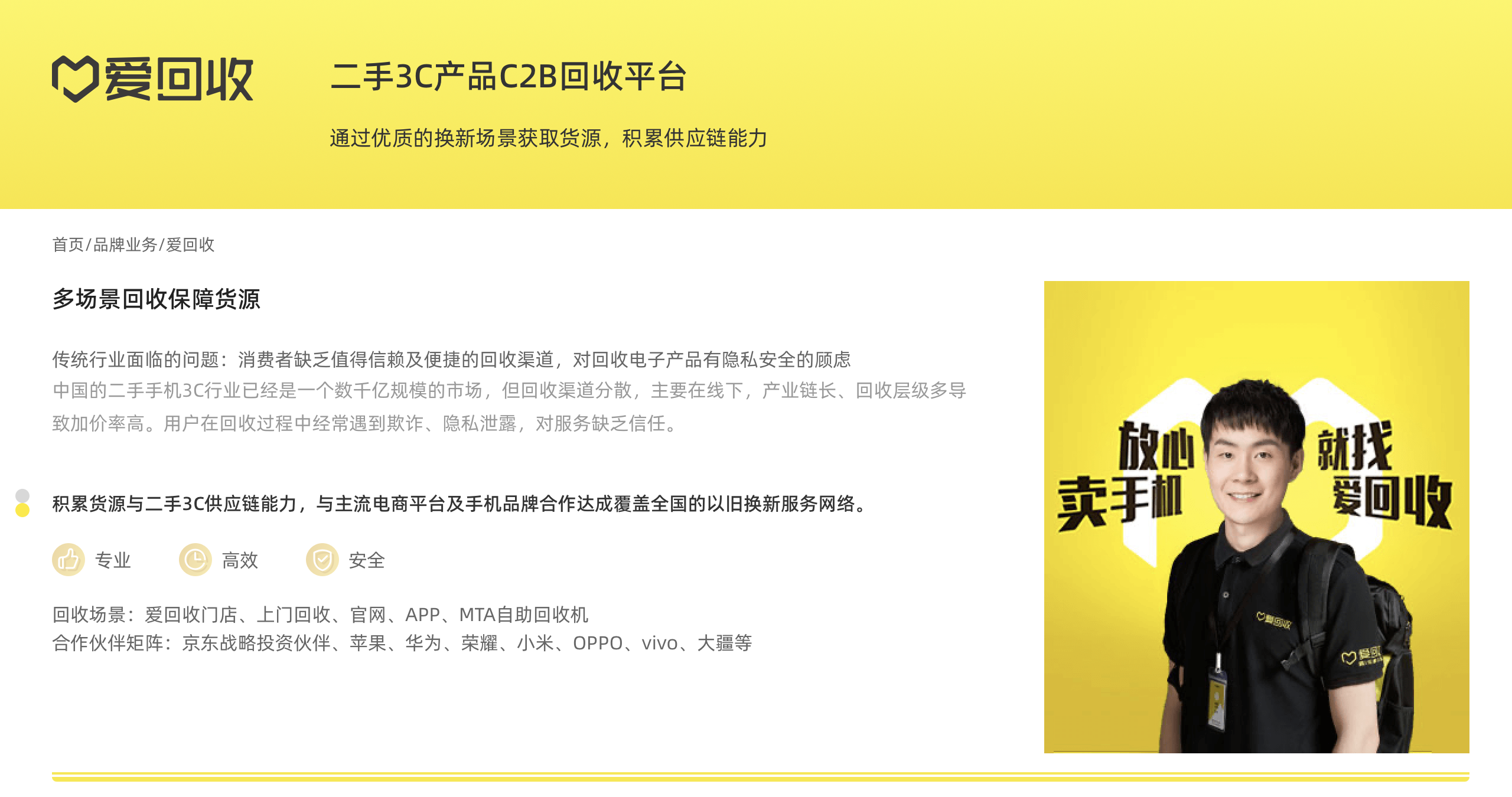
Image source: Renewed
The third is one of the current popular ways to dispose of old mobile phones, with various recycling channels, including Aihuishou, Zhuanzhuan, and Shanhuishou. Consumers can appraise their phones through apps, and the platform will pick up the phones at the door and pay the recycling fee on-site after inspection. Some platforms will also set up offline outlets to provide on-site appraisal and recycling services.
'Going public' does not necessarily mean 'growing bigger and stronger'
In addition to direct toC recycling services for users, many recycling platforms also provide toB second-hand recycling services for mobile phone brands and e-commerce platforms, such as the Apple Store trade-in program and JD.com's trade-in program, which are actually provided by Aihuishou. Relying on JD.com's massive recycling demand, Renewed Group (Aihuishou) successfully went public on the New York Stock Exchange in 2021.
Coincidentally, in February 2024, Shanhuikeji (Shanhuishou), which had received investment from Xiaomi, submitted an application to the Hong Kong Stock Exchange for listing but failed to proceed due to various reasons; on September 17, 2024, Shanhuikeji submitted a second application to the Hong Kong Stock Exchange. In the application documents, we also see another side of the 'recycling platform'.

Image source: Hong Kong Stock Exchange
For recycling platforms, does 'going public' really mean 'growing bigger and stronger'?
According to the introduction in the listing application documents of Shanhuikeji (Shanhuishou), its business model can be divided into two parts: recycling and sales. Recycling refers to Shanhuishou as a recycling platform, recovering idle digital products from individual consumers and enterprises (distributors, retailers, operators). After being processed by Shanhuikeji, the recovered products will enter the sales part, and will be resold to individuals or merchants through its own platform (Shanhuiyoupin) and self-operated stores on third-party e-commerce platforms.
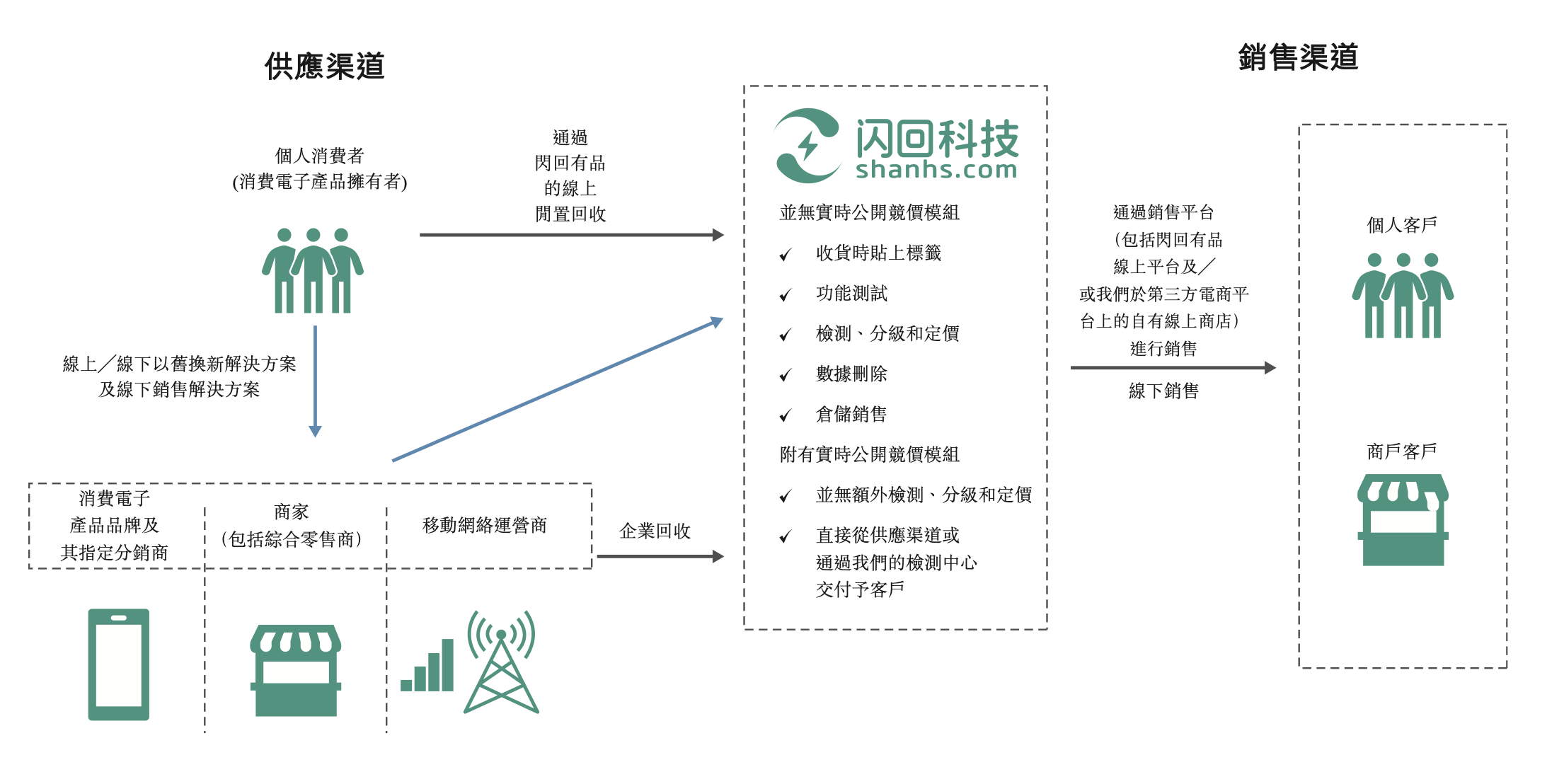
Image source: Shanhuikeji
According to the disclosed data, the total value of mobile phones purchased by Shanhuikeji (i.e., mobile phones 'recovered' by Shanhuishou) in 2023 was approximately RMB 985.4 million, of which 85.1% were purchased through trade-ins, with idle purchases and corporate purchases accounting for 5.7% and 9.2%, respectively. In the first half of 2024, the total value of trade-ins accounted for 94.4%, while idle recovery and corporate recovery accounted for only 1.8% and 3.8%, respectively. More than 90% of these recoveries came from offline purchases, specifically trade-ins at stores.
But don't forget that the 'purchase' plus 'sales' operating model means that companies cannot simply profit from 'recycling' alone. Moreover, Shanhuikeji's business is highly dependent on cooperation with upstream procurement partners, primarily through their offline stores and online platforms to obtain second-hand consumer electronics. If there are problems with these partners, it may directly affect the stability of the company's sales supply chain, thereby causing significant adverse effects on business operations.
According to the relevant documents, Shanhuikeji's gross margin fluctuated during the reporting period, primarily influenced by changes in procurement costs and sales prices. Due to fierce market competition, the company had to increase commission payments to upstream procurement partners to maintain market share. This increase in costs, coupled with the uncertainty of the macroeconomic environment, posed significant challenges for the company in improving its gross margin. Additionally, the rapid launch of new mobile phones further exacerbated cost pressures. These factors collectively contributed to a decline in Shanhuikeji's gross margin, adversely affecting profitability.
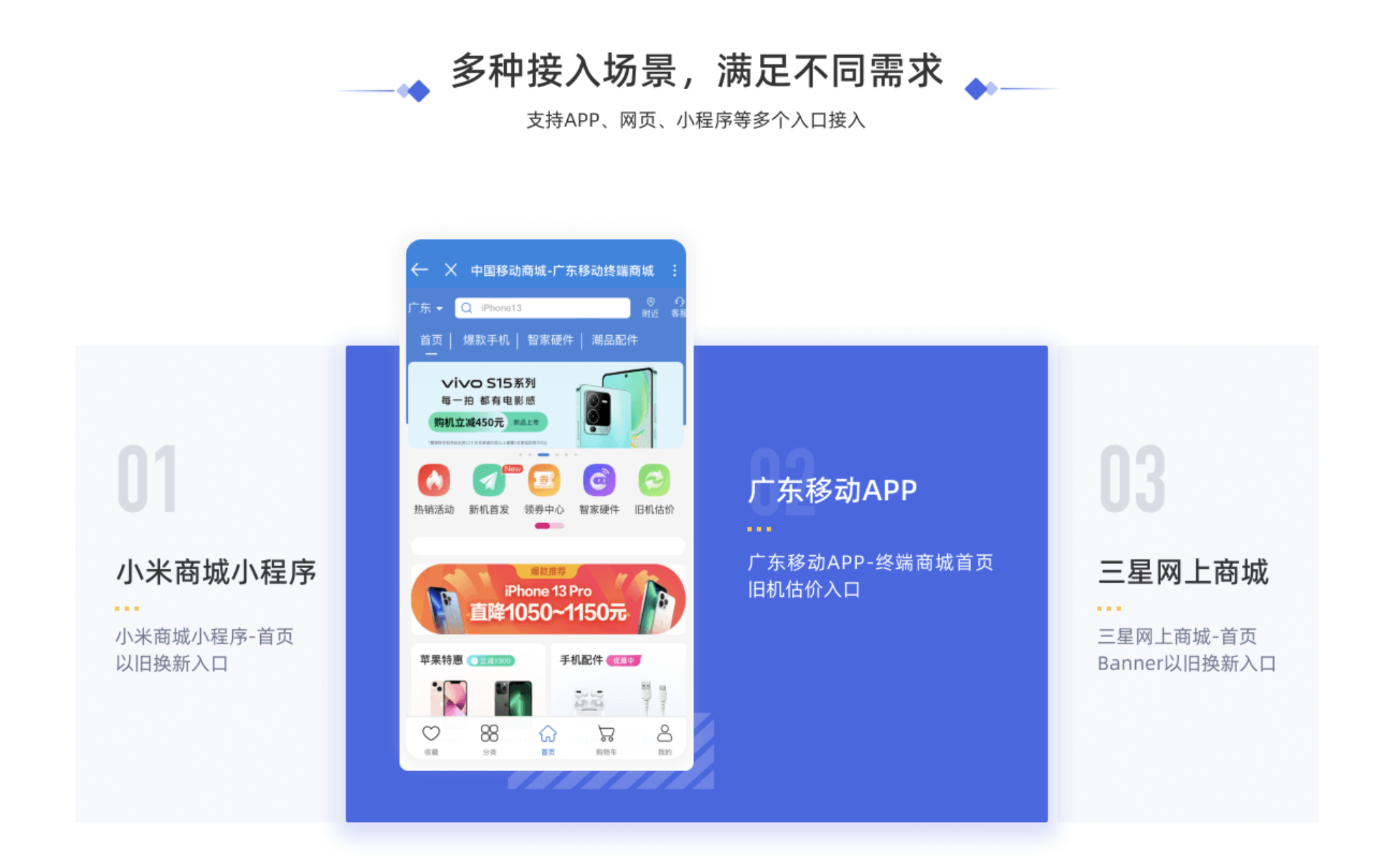
Image source: Shanhuikeji
The prospectus shows that Shanhuikeji has consistently recorded net losses over the past few years, with net current liabilities and net liabilities increasing year by year. This is primarily attributed to the company's heavy investments in operations and procurement to gain market share, as well as redemption liabilities arising from preferred equity. If cash flow and profitability cannot be improved in the future, going public will not fundamentally resolve Shanhuikeji's financial pressures.
In fact, Shanhuikeji is not the only recycling platform facing similar loss challenges. In Q2 2024, ATRenew (Renewed) reported a loss per share of approximately RMB 0.19, also facing persistent loss issues, with highly similar causes: fierce competition in the second-hand recycling platform market has forced ATRenew to invest more resources in marketing and channels, thereby increasing costs. Furthermore, procurement costs for second-hand electronics are rising, further compressing overall profit margins.
Whether it's Aihuishou or Shanhuishou, their operating conditions reflect the common shortcomings of the second-hand recycling industry, particularly in terms of supply chain management, market competition, and profitability challenges. Maintaining a healthy financial position while experiencing rapid growth will be crucial to determining the success of second-hand recycling platforms in the future.
Mobile phone recycling is a 'slow industry' with a long investment return period
Second-hand recycling platforms are not without the possibility of success. According to data from Sullivan mentioned in Shanhuishou's prospectus, China's second-hand consumer electronics market is expected to grow at a double-digit annual rate in the coming years, making it one of the largest second-hand equipment markets globally. This indicates that the market demand for China's second-hand recycling platforms will continue to expand.
Secondly, second-hand recycling platforms can improve operational efficiency and reduce costs by adopting more efficient inspection, grading, and pricing systems. At the same time, they can differentiate themselves from the 'P2P' second-hand transactions on second-hand trading websites by providing corporate inspection and grading systems to endorse second-hand products. Additionally, second-hand platforms can collaborate with other enterprises to offer after-sales services for procured second-hand devices. This can not only enhance the speed and accuracy of recycling but also improve the user experience for consumers, thereby strengthening the platform's competitiveness.
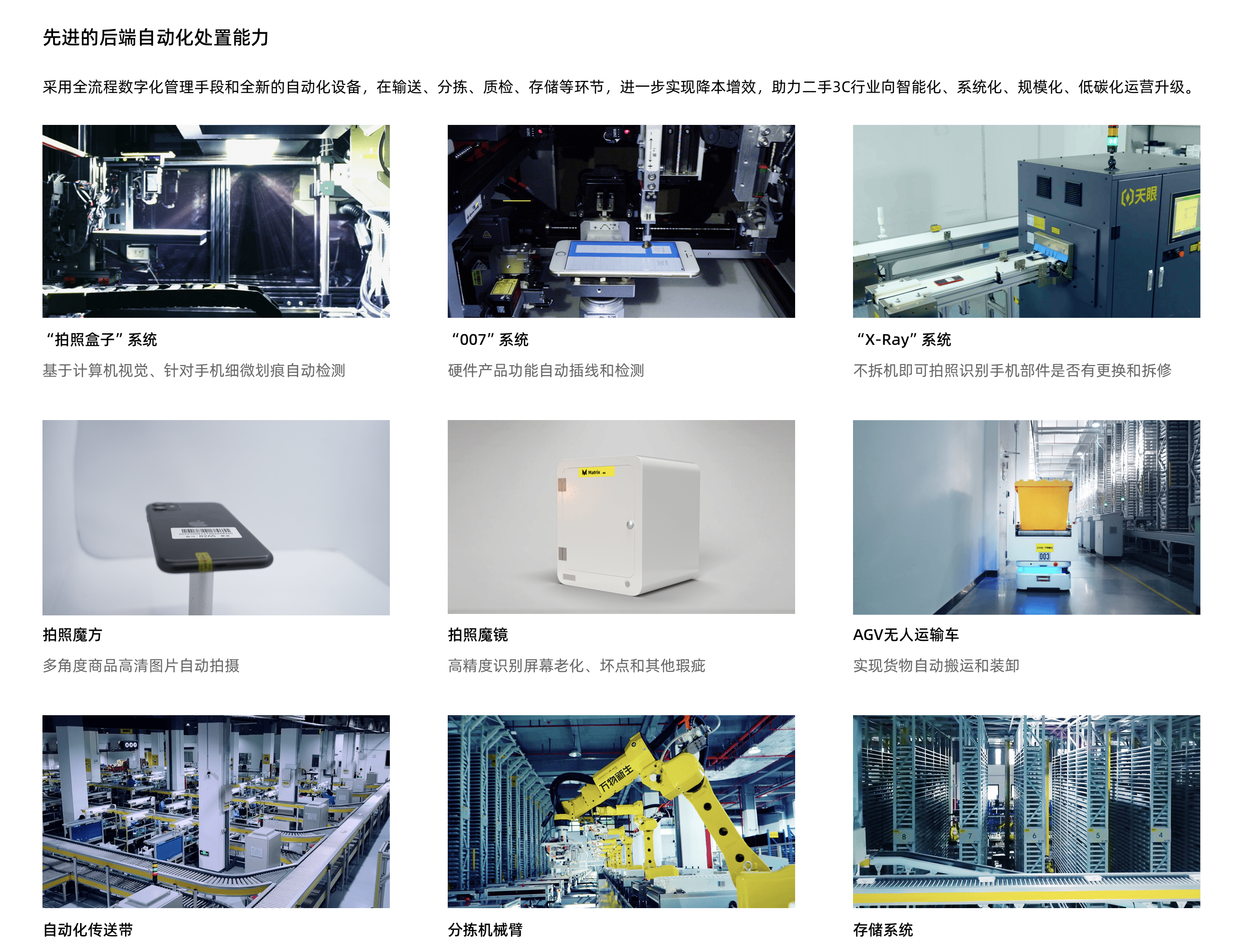
Image source: Renewed
However, it is important to note that the actions taken by second-hand recycling platforms to expand market influence and enrich after-sales services are bound to affect profitability in the short term.
Despite the many challenges facing the second-hand recycling industry, its market prospects remain bright. Technological innovation, growing market demand, and policy support will serve as the three major drivers propelling the development of this industry. After all, domestic consumers have had the tradition of "trading in old phones for basins" for many years. Compared to letting phones rot in drawers, it is always best to let them shine in others' hands.
Source: Leitech





